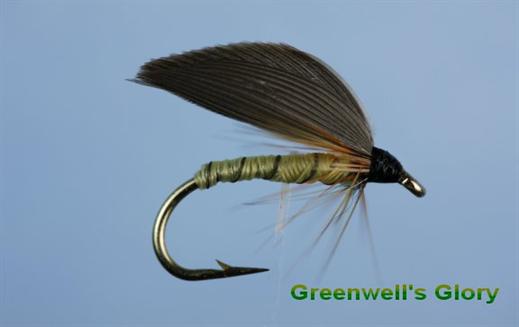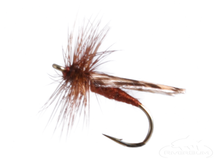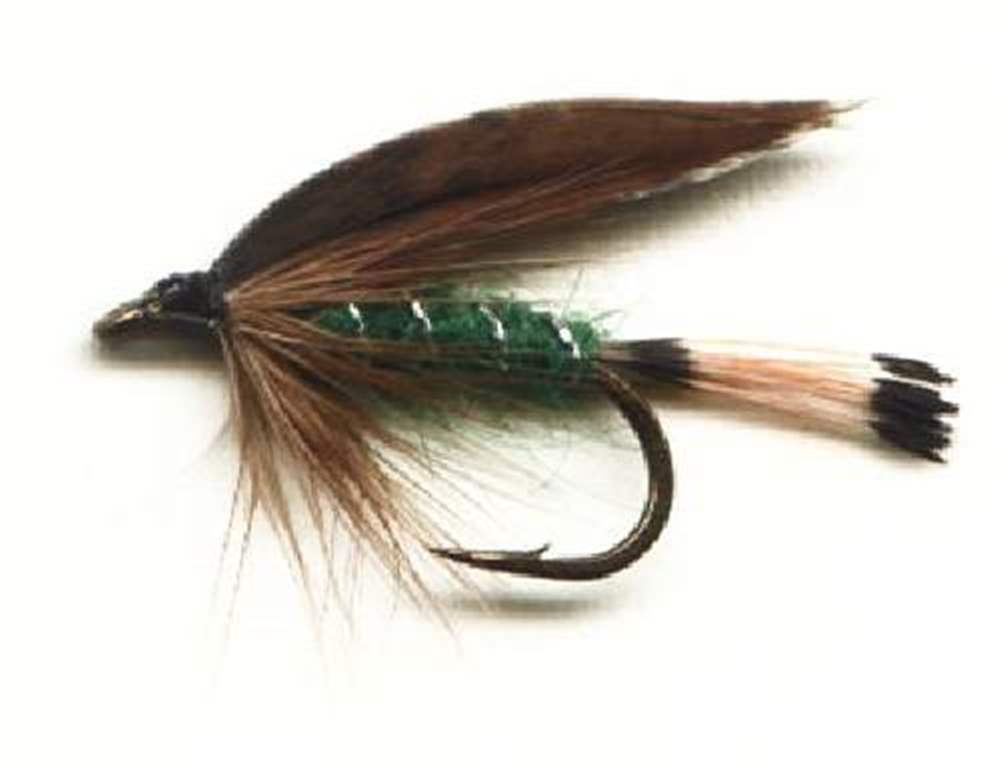Here's a Grouse and Green from an internet search. Is this the pattern you mean?
Grouse & Green | The Essential Fly | Wet Flies
What struck me is the palmered dry fly hackle on body the top pattern which is a sign of a dry fly. Also the hackle in front of the wing is heavily hackled with dry fly hackle. Maybe it is supposed to be a skittering dry fly pattern --> travelling sedge.
Traveling Sedge~Caddis (skittering, running, motoring along…a wallow and a glump) | SwittersB & Exploring
The grouse and green is, just like every fly, variable depending of the tier and can be varied to suit conditions.
It is, or at least used to be, common practice to add a body hackle for fishing in rougher conditions or when using it as the bob fly in a team of three. this is even more common on Irish lough fly patterns.
I think people get too hung up about exactness when trying to tie a particular pattern, only the originator of a pattern can know what they were trying to achieve and whether or not it was as successful as it could have been.
It would be a mistake to think that every illustration of any particular fly is to be taken as gospel and the only way the fly should look.
The "classic" Grouse and Green is often seen in different books tied in so many differing ways that you would hardly think it were the same pattern. My own variation ( aren't all flies a variation of the original? ) has a Jay throat hackle for the waters I fish and a body hackle for rough water or bob position, without if I put it on the point of a team of three.
There is also the complication of the Woodcock and green, Mallard and green, Teal and green and so on, they are all variations on a theme.
The Grouse and Green in your illustration would be considered grossly overdressed for many waters I fish.





